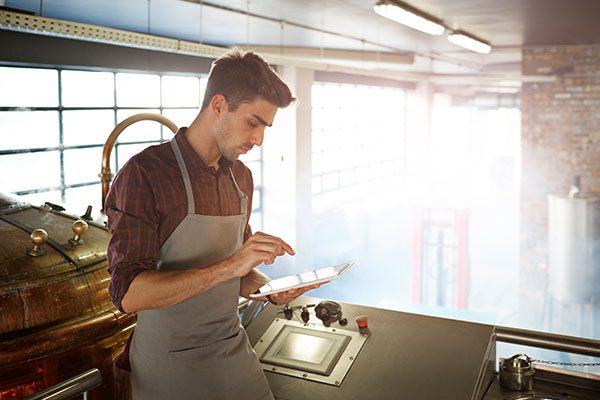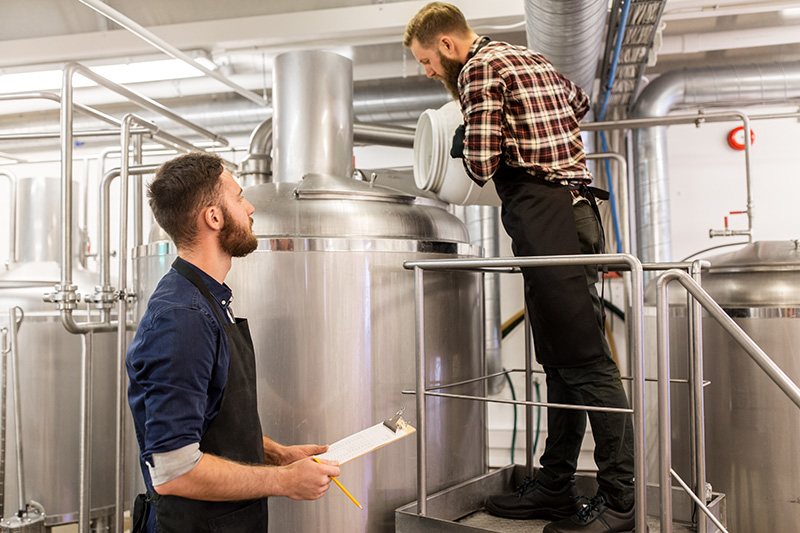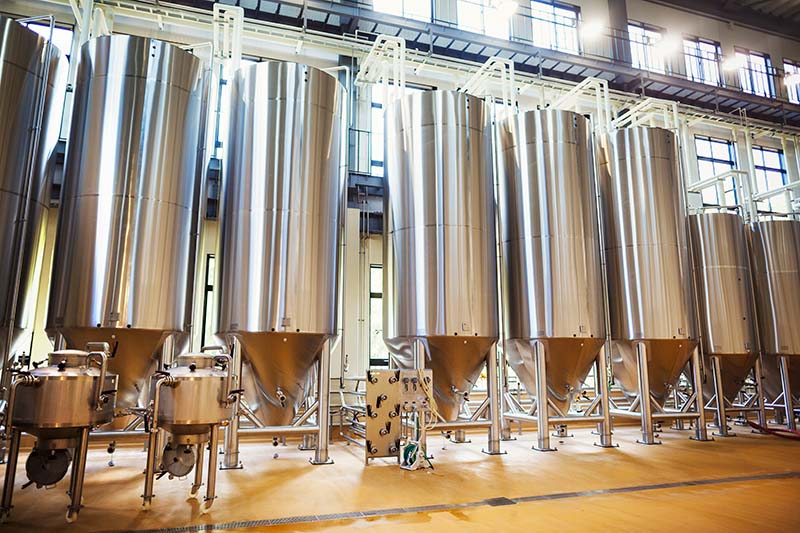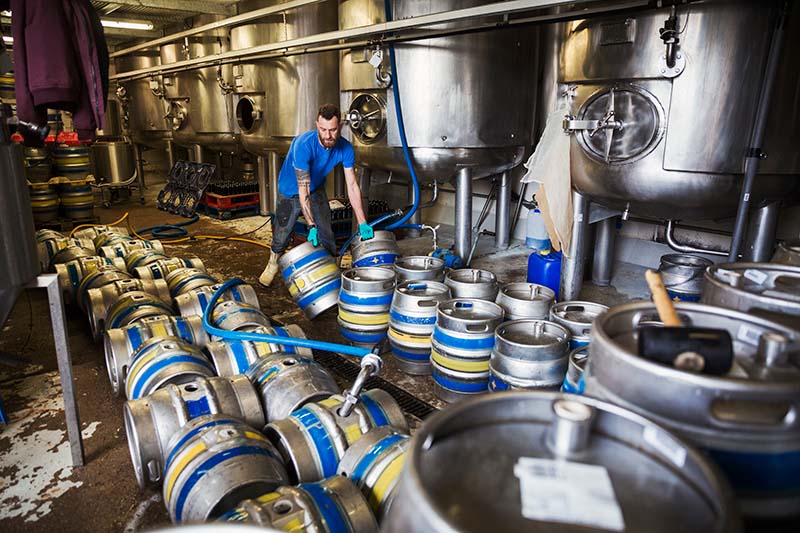The complete malting and brewing process
Below you will find a complete brewing process with an explanation of how Josatech Projects can support you and help you with the automation.
Automation of a brewery or malthouse
On this page you will see an overview of the malting and brewing process for the production of beer. This example makes the added value of our support clear. If you have any questions about this, feel free to get in touch!


By adding water at a temperature of 15°C the moisture content is gradually increased until it reaches 45%. This happens in 3 phases because not every layer absorbs water at the same speed.
The water is changed regularly to remove impurities and micro-organisms. After this, they are tested for water sensitivity and dormancy.
A mixer rotates in the germination tank and turns the germinating mass. In this way, the malt prevents suffocation and mold development. Men regulates the temperature and air circulation specified by fans.
During germination, enzymes are produced that the brewer needs. The malt house also degrades other substances such as cellular material, which is anything but desirable for the brewer.
The desired amount per malt type is weighed and then lightly crushed in the malt mill.
This is to ensure that the malt can absorb water and that the malt can build up a good filtration bed at a later stage.
In the maize silage, different temperatures and rest times are used to convert the starch in the malt into fermentable sugars.
A mixer guarantees the homogeneity of the mixture of malt and water. The monitoring of the acidity (pH) is extremely important here, as is the water composition.
After the prelauf, it is drained to the boiling kettle and at the same time the malt bed is rinsed out with an amount of water. The drains to the boiling kettle are accurately measured for sugar content and pH.
The speed of the run-off should not be too fast to avoid the compaction of the malt bed.
The wort is now brought to the boil for a set time and hops, any herbs are added. The wort is now made sterile and unwanted substances are boiled off.
Here too, the pH is important for both hop yield and to create optimal conditions for protein precipitation. After cooking, this matter, protein precipitation and other substances are separated in the whirlpool.
This is also the first clarification of the wort after boiling.
From the whirlpool tank, the hot wort is pumped through a plate cooler so that the desired temperature is reached to start the fermentation.
At the same time, oxygen is injected during the transfer to the yeast tank behind the cooler to give the yeast the most optimal conditions.
At large breweries, the yeast is already injected at the same time as the oxygen. At smaller breweries this is done by hand.
During the transfer, the yeast is added and the yeast tank is closed. After 8-24 hours, the yeast is already converting sugars into alcohol. This happens at temperatures between 18 and 26 degrees depending on the yeast strain.
Since yeast is exothermic, external cooling of these tanks is vital to keep the yeast as happy as possible. Brewers make wort, yeast makes beer is a well-known expression in the industry.
After lagering, the beer is transported to new clear beer tanks. Along the way, they are filtered to improve shelf life.
If refermentation is to take place in the bottle, a small amount of dissolved sugar and yeast is added. For beers that are not refermented in the bottle, the CO2 content is brought up to the required level.
The beer is then transported to filling lines. Here the beer is packaged and labeled.


What Josatech Projects can do for your automation
Software development and optimization of, among others:
- Dosing and transportation of raw materials and ingredients and storage management of tanks.
- Mash temperature and rest times with step programs and recipe modules.
- Cooking temperature and duration monitoring of temperature controls.
- Hops and spice additions via step programs according to recipes or manual interactions by the operator.
- Liquid transport to and from yeast and fermentation tanks with tank management modules.
- CIP programs for cleaning the installation after finishing a batch.
- Batch programs and reports.
- Supply of electric drives for controlling the pumps.
- Supply and development of compact controls for microbreweries based on Tia Portal.
- Delivery of PCS 7 batch and route control systems made for your brewery.
- Delivery of servers, storage and network equipment for the virtualization of the brewery.
Contact us and we will work out a solution tailored to your brewery or other situation, small or large.

